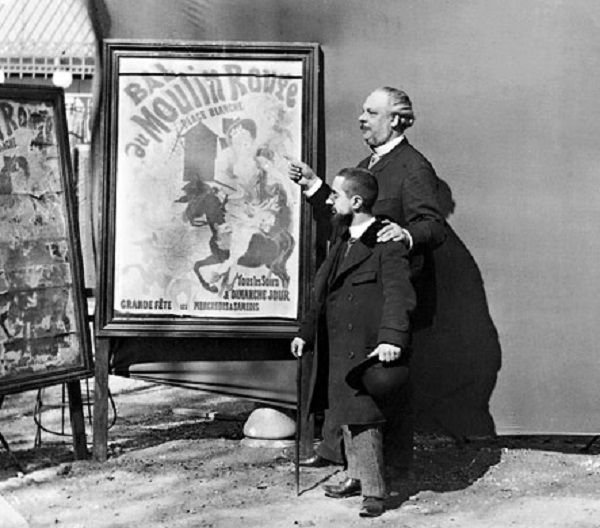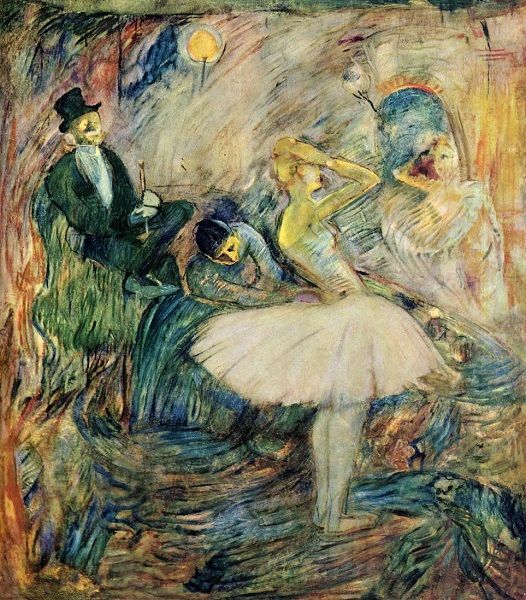Henri de Toulouse-Lautrec, the brilliant monster of Belle Epoque
After called "ugly little monster" by the first woman he loves, he moved to Paris, in the neighborhood of artists, Montmartre. He gives himself to art and alcohol, which become his true lovers. Seated at a table in the Moulin Rouge or other nightclub, amid laughter, alcohol, and prostitutes, he quickly sketched the nightlife of Montmartre. In the morning, the sketches became paintings. Henri de Toulouse Loretz's creature belongs to post-impressionism in art. His paintings feature a flat drawing, a strong contour and a lack of shadows and glare. He is one of the first masters of lithography. For 37 years he created 700 canvases, 350 posters and 5000 drawings. On the day of his death, prostitutes in Paris did not work as a sign of respect for his benefactor and artist. It is said that, unlike the small growth, he was quite physically different in other respects.

Henri de Toulouse-Lautrec was born on November 24, 1864, in the Boc castle in Albi, France. His parents are descendants of old aristocratic families. His father, Count Alfons de Toulouse-Lautrec, is known as an eccentric, interested only in hunting. His mother, Adelaide Tapie de Selairean, is a meek and decent woman. The first painting lessons Henry receives from his uncle Charles, an amateur artist. In 1872, he enacted "Fontenas". His earliest preserved drawings are from 1873. Henry suffers from a bone disease whose nature is not established for sure. On May 30, 1878, he breaks his left thigh bone when he falls. In August 1879, he broke the right one, leaving himself lifeless. The illness and the consequences of it play a major role in his later life and are reflected in his work. Examining complexes because of his underdeveloped body and inconspicuous appearance, Lautrec could either close himself in self-isolation or challenge the compassionate attitude of the others. He chooses the second one. His scandalous behavior and lifestyle become notorious and subject to many anecdotes. In 1881, he graduated successfully. That same year he decided to devote himself entirely to painting. In 1882, he became the student of the official painter Leon Bona. The next year he moved to Fernan Cormon's studio. Since 1884 he has settled in the Bohemian Paris neighborhood of Montmartre. He became a regular visitor to the famous entertainment venues "Elyse Montmartre", "Moulin de la Gallet" and "Sha Noir". He is a friend with the artist and retired cabinetmaker Mirtison Aristide Bruan (not to be confused with Aristide Brian). He maintains an intimate connection with the famous artist model Susan Valodon. Plans of his works become cabarets, their permanent visitors and artists. Favorite characters for him are the dancers La Guliu (Lakomnitza) and Valanthen Bezdrosti.

Bohemian life is rarely visited by Kormon's atelier. Here, in 1886, Toulouse-Lautreck became acquainted and befriended St. Vincent van Gogh. He receives family support, thanks to which he managed to build a studio. In 1888, the twenties were screened in Brussels. That same year, he interrupted his relationship with Susan Valodon. He finds out that he's sick of siphyllis. In 1889 he met Edgar Degas, whose work he admired. He became a regular visitor to the newly opened Cabaret "Moulin Rouge". The following year he took part for the second time in the show of the Twenty. Here, between him and the artist Henri de Gru, there is a strike. Gru doesn’t agree with the painting of Van Gogh in the exhibition. Toulouse-Lautrec furiously defends his friend. Both opponents declare a duel that does not happen. Since 1891 Toulouse-Lautrec has begun to become popular with his posters for the Moulin Rouge and other amusement establishments, as well as for Aristide Bruyan. He began to work with lithography. In 1893 he made two exhibitions at the gallery Maurice Joayan. He creates posters for dancer Jeanne Avril and singer Ivet Gilbert. Increasingly, he visits public homes. In 1894 he settled down to live in the newly opened public house on Moulin Street in Paris. In his work of this period, a great place occupied works with stories of such establishments. Among the most famous are the great scenic canvas "In the hall of the Moulin Street", completed in 1895. He returns to the stories of the artistic world of Paris. Makes posters for the performances of singers May Milton and May Beaulieu. At the request of the former Moulin Rouge star La Guliu, he painted the decoration for her pavilion. Takes a trip to London where he meets Oscar Wilde and Lisbon.

The Dancer in Her Dressing Room
Resentful of his scandalous behavior, relatives gather and under the direction of his uncle Charles burn his paintings in Albi. Consequently, participants in the event deny the fact. In 1897, Lautrec embarked on a trip to the Netherlands. Here he gets acquainted with the works of Dutch masters. In May 1898, he presented his exhibition at the Gupil Gallery in London. His health is getting worse because of the abuse of alcohol. After a seizure of delirium, Tremens was placed in the Neuil Psychiatric Hospital where he stayed from February to May 1899. After leaving, he was in Kroato, Havr and Tosa. Autumn is in Paris and returns to his former lifestyle and alcohol. The summer of 1900 spent in Havur and Arcachon, the fall in Malomer, and the winter in Bordeaux. He draws a lot. On August 20, 1901, he was paralyzed. His mother takes him from Paris to Malomer. Here Toulouse-Lautrec died on September 9, at the age of 36.
Creativity
The creative heritage of Toulouse-Lautrec includes about 600 paintings, about 330 lithographs, 31 plaques, 9 "dry needle" prints, 3 monotypes, thousands of drawings and sketches. The artist applies a special painting technique considered to be the invention of his contemporary Federico Zandomenegi. It consists of applying grease from highly diluted turpentine oil on canvas or cardboard. Most often no preparatory drawing is used. This preserves the freshness and immediacy of the work. Part of the effect is the cardboard or canvas perforated under the paint, the color of which is usually not white.
Very well written article. I was wondering what your favorite Lautrec painting is? My favorite is The Dancer In Her Dressing Room as shown in the article, however my second favorite is The Spanish Dancer by Lautrec.
Well, besides"The Dancer in her dressing room" I like his "La Toilette", and years ago I bought a blouse on which it was depicted "Le Chat Noir" :D
Wow, what a prolific painter! Thanks for the educaiton, @goldflesh!
You are welcome :)
good post friend
Thanks :)
Absolutely amazing artist! Oh what it must have been like to be part of la Bohème...
Yes, that was great time...
You got a 11.43% upvote from @postpromoter courtesy of @godflesh!
Want to promote your posts too? Check out the Steem Bot Tracker website for more info. If you would like to support the development of @postpromoter and the bot tracker please vote for @yabapmatt for witness!